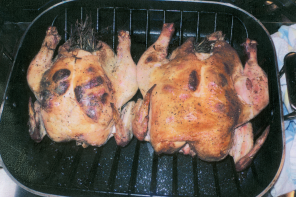There are few places in France not synonymous with vino — both the drinking and the producing — but the French Alps have more of a reputation of being a place of recreation than wine-ing. You can ski, you can bike, you can boat, you can eat copious amounts of cheese in an idyllic setting, such is life in the Savoie (pronounced “savwa”) Mont Blanc region. The wines are often an afterthought, even if where they’re grown is nothing short of magical – think vineyards rising from rocky slopes, presided over by ancient towers dripping with ivory. It’s a place of history and enchantment, and the wine is finally getting the attention it deserves.
The Wines
We’ve covered the wines and the region in detail, but here’s a brief refresher: Savoie vineyards are home to some 23 varietals, many of which you won’t find anywhere else in France, along with classics like Chardonnay, Pinot Noir and Gamay. The real stars of the show are the white Jacquère, Altesse and Grignet, which were once simply crisp and refreshing but have become more complex and rich. Red fans will adore Mondeuse, tannic, a little spicy, a little peppery, or Poulsard, native to nearby Jura. There’s a lot going on in a pretty small space — not even boasting 2,000 hectares, the region accounts for less than one percent of French wines.
The Making Of
Just how much the wines have to offer is something that’s been discovered only recently. In the past, Savoie wine was sold cheaply and given the care a low price tag elicits. Instead of cultivating it to stand alone, it was often blended with sugar and spices to make vin chaud, a warm wine enhanced with cloves, cinnamon and ginger to make it the darling of French Christmas markets.
That’s all changing due to more modern wine-making techniques and passionate local vintners — what were once straight-forward bottles are now compelling, with more unique profiles and have great age potential. They also easily pair with food (and what more, really, could you want?).
Though it’s an alpine area and vines are planted at between 820 to 1804 feet, the Savoie microclimate isn’t as cold as one might suspect thanks to nearby lakes and rivers. In some vineyards, grapes will share real estate with apricot and olive trees, though producers have to result to non traditional methods of protecting them from the perils of their steep slopes.
Grass is often planted between the vines so the soil doesn’t wash away, but the steepness also means the grapes have more sun exposure. Dry-stone walls, a notable part of the landscape, support the terraces. Of course, the location comes with risks as avalanches are not uncommon; it makes sense that previously, vintners might not have put as much effort into grapes that were at the mercy of being swept away.
Now, however, they’re expending a great deal of care in the process of bringing wine from the ground to the glass. In order to coax it to greatness, local producers have started using fewer bunches of grapes from each vine and reducing the amount of fertilizer. To make fermentation more gradual and to increase aroma, tanks are kept cool. Altesse is sometimes aged in oak to help deepen and extract its full-bodied, floral and nutty notes.
As wine producers become more serious, so does local wine appreciation. A museum has been opened, specifically to honor local wines, while tasting rooms at the vineyards are often intimate, a chance to interact with those behind the wine. The producers know they have something special on their hands; they delight in showing visitors just how special it is.








